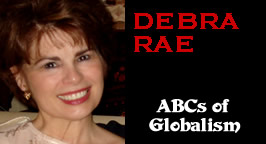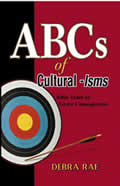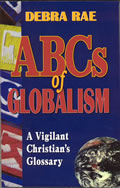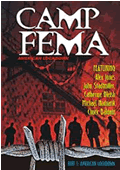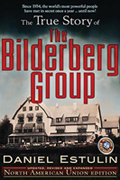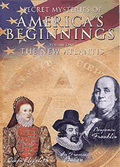CHIC
CHEAP JOURNALISM AND FAUX-NEWS
PART 1
By
Debra Rae
October 6, 2009
NewsWithViews.com
Almost daily, my husband and I get to whining about the mainstream media. Don’t get us wrong. We’re all in favor of the “free press.” Not only that, we welcome diverse opinions and, in fact, frequently debate on opposite sides of issues. That’s clearly not it. Problem is we’re hard pressed to find news of substance; journalism, we fear, is at an all time low.
Case in point: Instead of comprehensive coverage, the media increasingly serves up frivolous celebrity gossip, daily doggie anecdotes, and banal chit-chat about local “weather activity.” Apparently my husband and I are not alone in our complaint. Syndicated columnist David Sirota describes this fluff-news phenomenon as a “one-two punch” to the jaw of journalism.
Despite our battered, if not imploded newspaper industry, content still matters. To that Sirota adds: “The most preventable tragedy” is “the deterioration of quality [content].” Its flagrant lack begs the probing question: Just how do mundane happenings in the White House, plumped personality profiles, or an athlete’s run-in with the law qualify as hard-hitting, “breaking news”?
Cheap Journalism à la Mode
Trends toward media consolidation diminish the need for competition. Hence, stations routinely sacrifice content and cut costs to increase profits. Chic “cheap journalism” spares all expense. For example, reporters bypass costly, investigative journalism for “quickie” repeat visits to grieving families and courts of law. There they rehash known facts about macabre cases that are more tabloid appropriate than newsworthy.
When hard pressed to find a bleed story with which to lead, local stations turn to their affiliates for fast fixes, or they employ what is portrayed as a cliff-hanging, nail-biting “tease.”
Early this morning I flipped on the TV news, as I typically do. Without having heard one shred of viable news, I had brewed my coffee, prepared, consumed, and cleaned up after my breakfast all the while I endured repeat teases about an upcoming story. Not surprisingly, lead ups exceeded time it took to tell that one (and only one) story. By then, I had emptied the dish washer and was out the door!
Mum’s the Word
To examine media trends, as this, David Simon released an HBO series called The Wire. This journalist-turned-director criticizes the industry’s “cutting product, scaling back news holes, shedding veteran reporters, and reducing the scope of coverage.” Even more alarmingly, mum’s the word where clandestine political agendas are concerned.
For decades a media conspiracy—yes, conspiracy—has been unveiled. You see, in 1990 when the World Federalist Association faulted the American press for being “slow-witted” at grasping most global developments, the WFA failed to reveal that, more likely than not, key omissions were by design.
Just ask David Rockefeller. At a Bilderberg Society meeting in Baden, Germany, he thanked attendees from the Washington Post, the New York Times, Time magazine, and other distinguished publications. For nearly forty years, he gushed, these friends of global governance had “respected their promises of discretion.”
This they did by withholding substantive news of global import from the general public. Not good.
Hello Out There in Television Land!
The 2009 Pew poll credited television as the dominant source for Americans to receive their national and international news. Unfortunately, what Americans look to as “based-on-a-true story journalism” has morphed into a sort of wannabe news more appropriately called “reality fiction.”
Even the venerated PBS journalist Bill Moyer admits to ending each day with Comedy Central’s The Daily Show. Whereas comedian-host Jon Stewart boasts of “faking the news,” Moyer credits him for delivering real news with extraordinary impact. Increasingly, young people look to Stewart for hard news; and older fans lap up Stewart’s infectious satire. Similarly, a spin-off and counterpart of The Daily Show, The Colbert Report is all too often embraced as non-satirical journalism.
Funny’s good. Still, I share Jack L. Warner’s sentiments directed at the in-it-for-ratings industry—namely, “if you want to send a message, use Western Union.” Nevertheless, television personalities and pundits persist in sending messages, not least of which is the apocalyptic notion that random acts of greenness are laden with cosmic consequence.
Frankly, their case is a tad overstated. Scientists today report a decade of climate stability. Just last year, Dr. Mojib Latif wrote a paper that anticipates a relatively cool next decade “even as heat-trapping gases linked to global warming continue to increase.” Did I mention that the good doctor is a prize-winning climate- and ocean- scientist from the Leibniz Institute of Marine Sciences at the University of Kiel?
For these reasons, and more, syndicated columnist George F. Will insists rightly “there is no precedent for today’s media enlistment in the crusade to promote global warming awareness.” No matter, our local news stations “infuse with grand significance” the mandate to save our planet one reusable grocery bag, weatherized window, bus pass, and fluorescent bulb at a time.
“And that’s the Way It Was”
For just short of two decades, anchorman Walter Cronkite punctuated each broadcast of the CBS evening news with the phrase, “and that’s the way it was.” The Pew survey indicates that seniors fifty and older—specifically, contemporaries of this, purportedly “the most trusted man in America”—choose television as their dominant news source.
Though the public in general and seniors specifically are increasingly down on news media organizations, most regard loss of major news sources as momentous. True, I’d miss our local stations, were they eliminated, but in no way do I bank on accuracy in reporting.
Just last summer, when interviewed albeit briefly, for our local KOMO news station, I was reminded yet again that a reporter’s take on my clearly expressed opinion is destined to be tweaked until rendered unrecognizable when aired. Thankfully, the story to which I refer was of no major consequence, but my fleeting “moment of fame” underscores why 63% of my peers judge news stories to be inaccurate—this, according to the 2009 biennial Pew media-attitudes survey.
Run the Press!
Despite public criticism of the way news organizations do their jobs, most Americans rate favorably their traditional news sources, such as daily newspapers; nevertheless, positive ratings of the dailies have decreased from 81% in 1985 to 65% in 2009.
For 65-year-olders (and counting), substantially more folks choose newspapers over the Internet as their dominant news source. Given the burgeoning era of Twitter, blogging, and cable-news eye candy, this is the only age group to do so. Unfortunately, in the words of David Sirota, a fellow at the Campaign for America’s Future, print journalism mass produces “gossip about gossip” and, then, wonders why folks grumble about it.
Our local newspaper for one is an incredibly shrinking product—not only in size, content, and grade of paper, but also in quality of journalism. It would appear that corporate ownership heightens concern over stock performance above commitment to so-called “Tiffany Era” journalistic professionalism.
|
Subscribe to the NewsWithViews Daily News Alerts! |
Although members of the White House controlling party are less likely to see coverage of the administration as fair, even Democrats have become more critical of news organizations that are big on “what sells,” but small on investigative segments featuring complex policy options and long-term investigative reporting.
Simply put, that’s the way it is.
Please stay tuned for Part 2 later this week, discussing dot-com journalism, news magazines, and talk radio. For part two click below.
Click here for part -----> 2.

